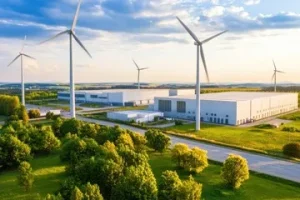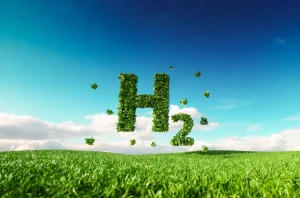Alkaline Electrolyser vs. PEM Electrolyser: A Deep Dive into Efficiency, Cost, and Application
AHydrogen generation is evolving quickly, with electrolysis playing a pivotal role in this transformation. Electrolysis, which splits water molecules into Hydrogen and oxygen using electricity, enables green hydrogen production. Alkaline electrolyser and PEM (Proton Exchange Membrane) electrolyser are the two most popular electrolysers available today. Each has strengths and applications, but knowing how they differ is crucial when selecting the right solution for specific needs.
Growing Importance of Hydrogen Generation
Hydrogen generation is increasingly vital as the world moves towards sustainable energy solutions. Green hydrogen, produced from renewable sources, is leading this transition by providing a clean alternative to fossil fuels. It plays a key role in decarbonizing sectors like heavy industry and transportation, where electrification is challenging. As cleaner energy sources gain global prominence, the hydrogen market is projected to grow at a CAGR of over 9% from 2021 to 2028, potentially reaching nearly $300 billion by 2030. Hydrogen is being adopted in applications such as steel production, chemicals, and refining, replacing fossil fuel-based products and significantly reducing CO emissions.
Alkaline Electrolyser: The Established Workhorse
Alkaline electrolyser have been employed for several decades, demonstrating high reliability due to their inherently simple design. Utilizing a liquid alkaline solution, typically potassium hydroxide, as the electrolyte, these systems facilitate the passage of electrical current between two electrodes. This process effectively separates water into its constituent elements, hydrogen and oxygen, with hydrogen being collected at the cathode.
Benefits:
- Affordable: Alkaline electrolyser are generally more cost-effective in production and operation than PEM, making them attractive options for large-scale hydrogen production.
- Long-lasting: Their stable and mature technology can be used efficiently across a long operational life of anything above 60,000 hours.
- Scale: Alkaline electrolyser is useful in situations where huge amounts of Hydrogen are needed, such as ammonia manufacturing and oil refining, among other industrial processes that require massive amounts of Hydrogen.
Drawbacks:
- Less Efficient: Alkaline electrolysers are less efficient than PEM electrolysers, requiring more electricity to produce the same amount of Hydrogen.
- Slow Response Time: Their slower start-up time and inability to respond quickly to variations in input power make them less suitable for applications that require dynamic operations, like renewable energy integration.
PEM Electrolysers: The Future of Hydrogen Generation
PEM electrolyser, developed more recently for hydrogen production, utilize a solid polymer-based membrane instead of a liquid electrolyte to facilitate the transport of protons from the anode to the cathode. Additionally, these systems operate at lower temperatures and exhibit a high level of efficiency.
Advantages:
- Higher Efficiency: PEM electrolyser perform better than alkaline systems, reducing the total energy consumed for hydrogen generation.
- Fast Response Time: These can readily adapt to variations in power supply making them suitable companions for fluctuating wind and solar generation.
- Compact Design: PEM electrolysers are more compact and have a higher power density, thus suitable for decentralized applications such as small-scale hydrogen production and refueling stations.
Limitations:
- Higher Cost: Production of PEMs requires expensive materials and technologies like platinum-based catalysts.
- Shorter Lifespan: The operational life of PEMs is usually shorter, though in most cases, they will operate for around 40 thousand hours, unlike |alkaline| variants, which have continued improving over time
- Sensitivity to Impurities; however, their operation efficiency can be improved by purifying water.
Application Scenarios: Choosing the Right Electrolyser
The choice between alkaline electrolyser and PEM electrolyser depends mainly on the specific application and operational requirements.
For Industrial Applications:
- Alkaline electrolysers are typically preferred for large-scale industrial applications where cost-effectiveness and durability are crucial, such as in chemical plants or steel manufacturing.
For Renewable Energy Integration:
- PEM electrolysers are better suited for renewable energy projects where efficiency, quick response times, and compact design are essential, such as in solar or wind-powered hydrogen production facilities.
Navigating the Future of Hydrogen Generation
In the hydrogen economy, both alkaline and PEM electrolysers serve essential roles. Traditional alkaline installations offer a reliable, large-scale, and cost-effective solution, while PEM electrolysis units provide the efficiency and flexibility necessary for integration into next-generation renewable energy projects. Technological advancements in these areas will be crucial for meeting the increasing demands of global energy and climate objectives.
Aligning electrolyser technology with specific application needs is critical to optimizing business processes, reducing costs, and contributing to a sustainable energy future.
Explore advanced Power Conversion Units designed for Alkaline and PEM electrolysers to enhance your hydrogen production for efficiency, scalability, and sustainability.
Contact us to learn more about how we can power your hydrogen journey.





